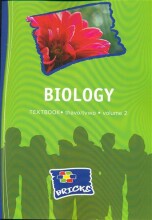Summary: March's Advanced Organic Chemistry Reactions, Mechanisms, And Structure | 9781119371809 | Michael B Smith
- This + 400k other summaries
- A unique study and practice tool
- Never study anything twice again
- Get the grades you hope for
- 100% sure, 100% understanding
Read the summary and the most important questions on March's Advanced Organic Chemistry Reactions, Mechanisms, and Structure | 9781119371809 | Michael B. Smith
-
10 SN2 Reactions
-
10.1 10-1 Attack of a hydroxyl at an alkyl carbon
-
What ion is usually required to convert an alkyl halide to an alcohol?
Hydroxide ion -
What solvents will enable alkyl halides to by hydrolyzed by water?
HMPA
ionic -
Which type of halide is generally unreactive in the conversion of alkyl halides to alcohols?
Vinylic halides -
10.2 10-8 Alkoxylation: The Williamson Reaction
This is a preview. There are 1 more flashcards available for chapter 10.2
Show more cards here -
The Williamson reaction is the best general method for preparing what?
Symmetrical and unsymmetrical ethers -
What types of solvents are usually used in a Williamson reaction? Give two examples.
Aprotic solvents: THF, ether -
10.3 10-10 Alkylation w/inorganic esthers
This is a preview. There are 1 more flashcards available for chapter 10.3
Show more cards here -
What two products can be formed by treating alkoxides/aroxides with methyl sulfate?
Methyl ethers of alcohols
phenols -
16 16.A Mechanism and Reactivity
This is a preview. There are 5 more flashcards available for chapter 16
Show more cards here -
The reactions in this chapter involve addition to what?
Carbon-oxygen, carbon-nitrogen, and carbon-sulfur double bonds, and carbon-nitrogen triple bonds. -
Why is the carbonyl carbon the atom that is always attacked in these reactions by a nucleophile?
The carbonyl carbon carries a partial positive charge dues the electron withdrawing nature of the oxygen/nitrogen/sulfur. -
What is generated in the normal acyl addition of a nucleophile to a ketone?
An alkoxide -
What is the product when an alkoxide is hydrolyzed?
An alcohol
- Higher grades + faster learning
- Never study anything twice
- 100% sure, 100% understanding
Topics related to Summary: March's Advanced Organic Chemistry Reactions, Mechanisms, And Structure
-
Mechanism and Reactivity - Nucleophilic Substitution at an Alipahtic Tigonal Carbon:The Tetrahedral Mechanism
-
Mechanism and Reactivity - Attack by Halogen at an Acyl Carbon - Formation of Acyl Halides from Carboxylic Acids
-
Mechanism and Reactivity - Attack by OH - Hydrolysis of Aliphatic Nitro Compounds (ANC's)
-
Mechanism and Reactivity - Attack by OH - Hydrolysis of Nitriles
-
Mechanism and Reactivity - Attack by OH - Hydrolysis of Carboxylic Esters

































